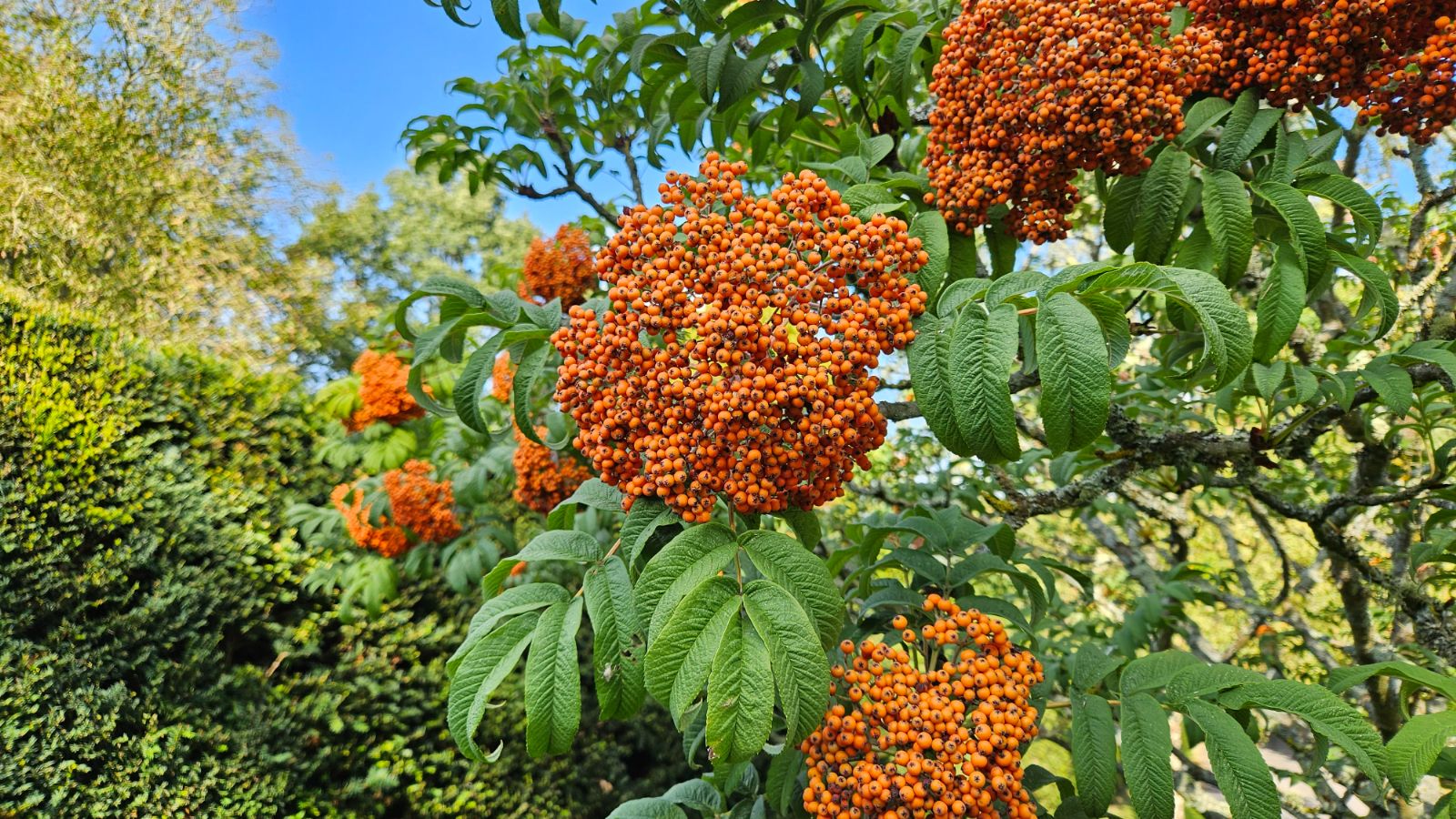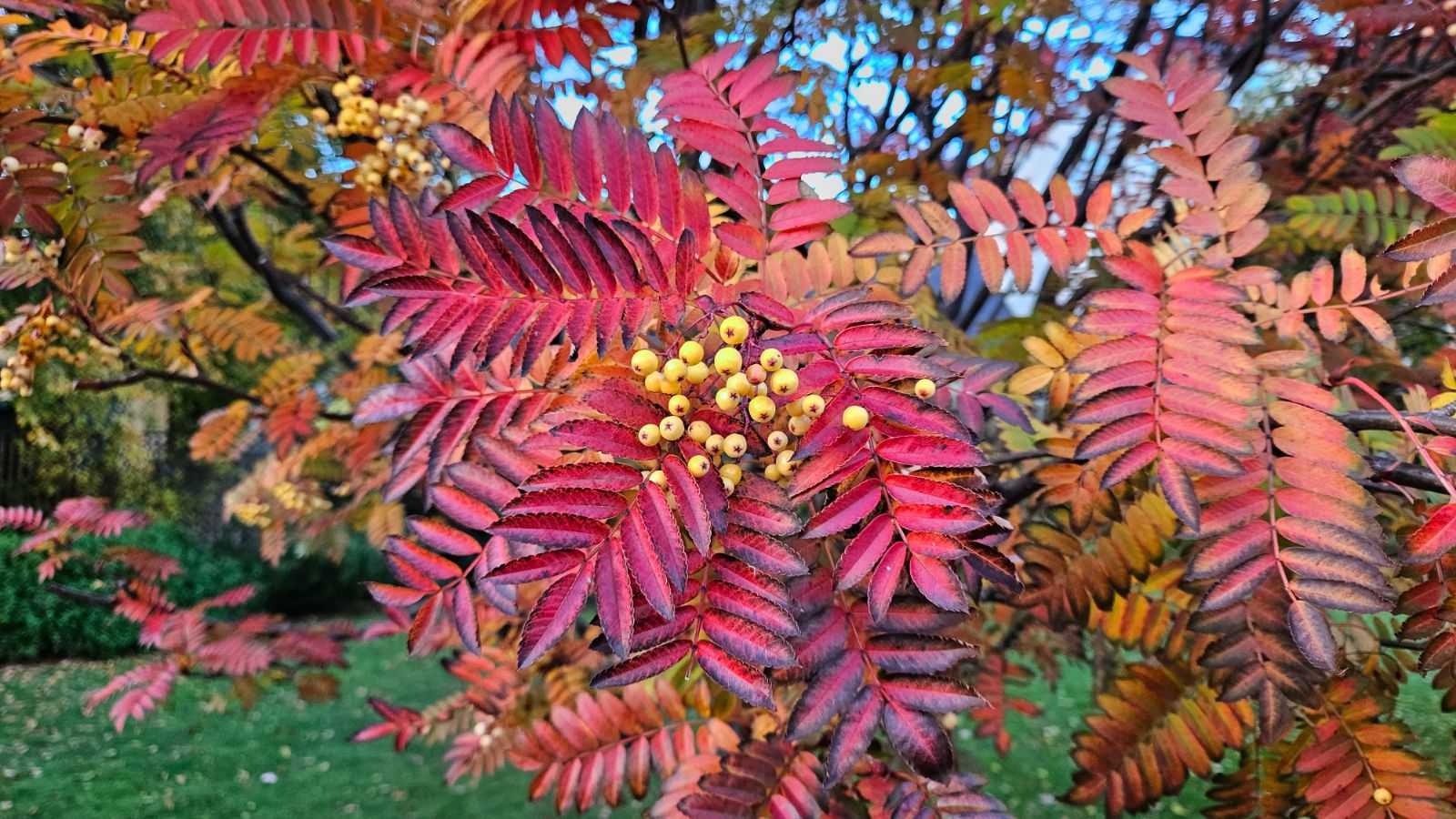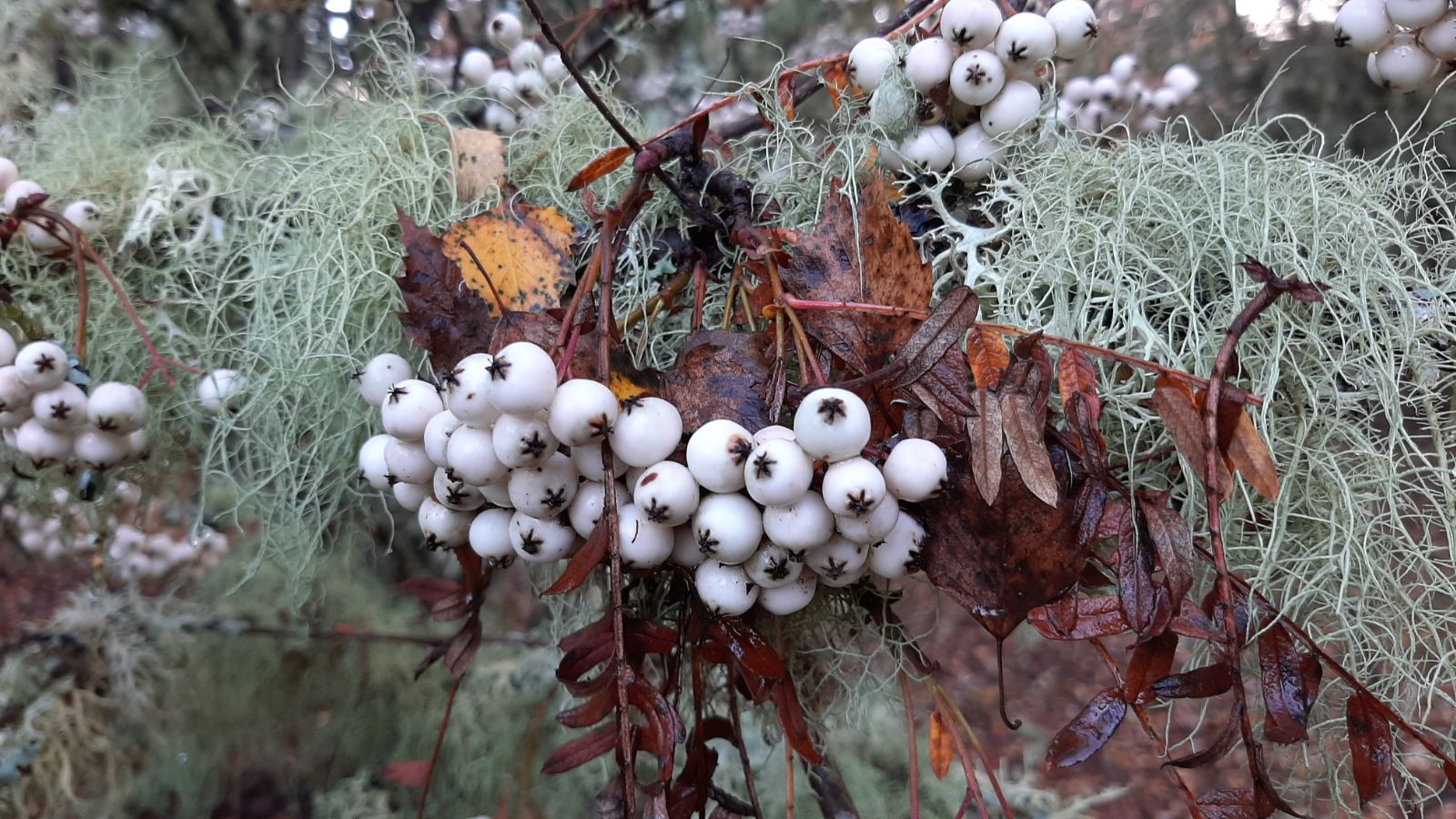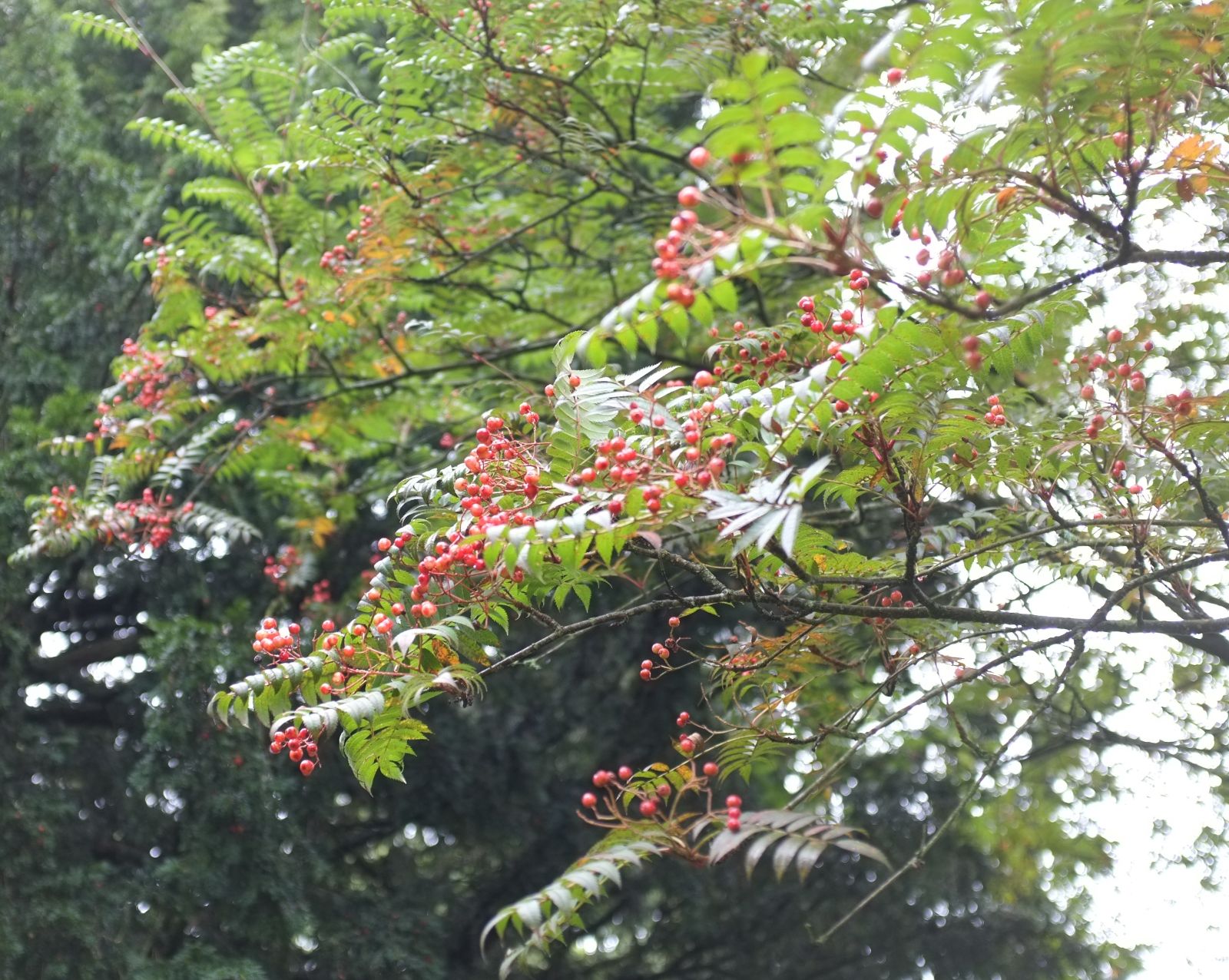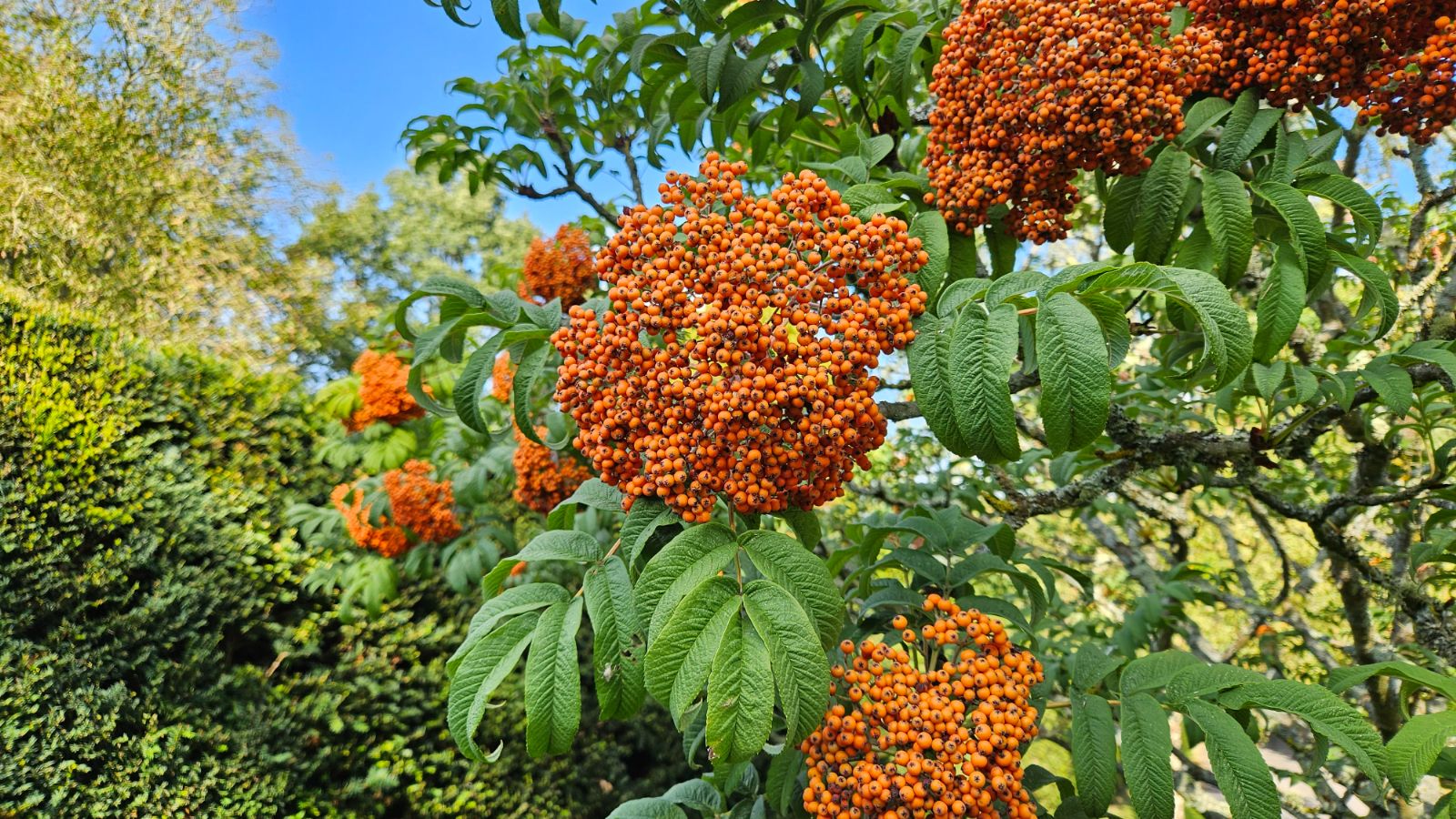Sorbus
Sponsor
Kindly sponsored by
This genus has been sponsored and new text is being prepared.
Credits
Article from Bean's Trees and Shrubs Hardy in the British Isles
Article from New Trees by John Grimshaw & Ross Bayton
Recommended citation
'Sorbus' from the website Trees and Shrubs Online (treesandshrubsonline.
Family
- Rosaceae
Common Names
- Mountain Ashes
- Rowans
Species in genus
- Sorbus americana
- Sorbus amoena
- Sorbus arachnoidea
- Sorbus aucuparia
- Sorbus carmesina
- Sorbus cashmiriana
- Sorbus commixta
- Sorbus coxii
- Sorbus decora
- Sorbus discolor
- Sorbus ellipsoidalis
- Sorbus esserteauiana
- Sorbus fansipanensis
- Sorbus foliolosa
- Sorbus forrestii
- Sorbus glabriuscula
- Sorbus glomerulata
- Sorbus gracilis
- Sorbus helenae
- Sorbus hupehensis
- Sorbus hypoglauca
- Sorbus insignis
- Sorbus 'Joseph Rock'
- Sorbus khumbuensis
- Sorbus koehneana
- Sorbus kongboensis
- Sorbus kurzii
- Sorbus lingshiensis
- Sorbus matsumurana
- Sorbus microphylla
- Sorbus muliensis
- Sorbus olivacea
- Sorbus parvifructa
- Sorbus pohuashanensis
- Sorbus poteriifolia
- Sorbus prattii
- Sorbus pseudohupehensis
- Sorbus pseudovilmorinii
- Sorbus randaiensis
- Sorbus reducta
- Sorbus rinzenii
- Sorbus rubescens
- Sorbus rufopilosa
- Sorbus rushforthii
- Sorbus sambucifolia
- Sorbus sargentiana
- Sorbus scalaris
- Sorbus sitchensis
- Sorbus tianschanica
- Sorbus ursina
- Sorbus vilmorinii
- Sorbus wallichii
- Sorbus wilsoniana
Editorial Note
SORBUS – THE VIEW IN 2023
The name Sorbus is extremely familiar to horticulturists and botanists and has been applied to a very large number of taxa that differ quite significantly from each other in morphology and, as has become apparent, genetics – a paraphyletic ragbag. This familiar, broad concept of the genus (Sorbus sensu lato [s.l.]), seems to have first been adopted by Alfred Rehder in 1927 (Rehder 1927–1940) and became widely accepted in mainstream literature, despite the obvious differences between groups of taxa. These became treated as subgenera: subg. Sorbus covered the pinnate-leaved taxa; subg. Aria the European entire-leaved taxa and subg. Micromeles the Asian entire-leaved taxa. This always creaky edifice was held together by the presence in Europe of numerous hybrids between members of subgenera Sorbus and Aria.
In The Genus Sorbus McAllister (2005) limited Sorbus to the ‘pinnate-leaved rowans’ (excluding S. [Cormus] domestica), following Robertson et al. (1991) who considered that Sorbus s.l. should be treated as five genera (Sorbus, Cormus, Chamaemespilus, Torminaria, Aria [including Micromeles]). While accepting Sorbus sensu stricto [s.s.], based on Sorbus aucuparia L., McAllister recognised that this classification could not be adopted without the creation of many new combinations for the many apomictic microspecies and hybrids found in Europe, mostly described within Sorbus s.l.. Others realised that the Asian entire-leaved taxa were neither closely related to entire-leaved European taxa, nor a single lineage, but without generic names for these species it was not possible to move forward in splitting the genus.
The impasse was broken by two important papers which provided the names needed to refer to all these plants without calling them Sorbus. Sennikov & Kurto (2017), with a follow-up by Sennikov (2018) comprehensively reassessed the European taxa and recognised five parental genera (Aria, Chamaemespilus, Cormus, Torminaria, Sorbus) and five hybridogenous genera (Hedlundia, Karpatiosorbus, Majovskya, Normeyera, Scandosorbus) to account for the tangle of hybrids formed between these (with the exception of Cormus, which does not outcross). Turning to the Asian taxa, Rushforth (2018) placed former members of Sorbus (s.l.) into seven distinct genera based on their morphology (Alniaria, Dunnaria, Griffitharia, Micromeles, Pleiosorbus, Thomsonaria, Wilsonaria). Hybrids between these genera are unknown. DNA studies of the Asian taxa are very incomplete and much more research is needed to test the validity of these genera, although they are currently widely accepted.
An alternative view to the dismembering of Sorbus s.l. is to include it and many other genera, including e.g. Cotoneaster and Malus into a vastly expanded Pyrus (Plant Gateway Ltd. 2018). This has almost universally been rejected as it results in the loss of numerous major genera that can be recognised both morphologically and genetically, including the commercially important Malus.
TREATMENT IN IDS TREES AND SHRUBS ONLINE – SEPTEMBER 2023
The current text for Sorbus is formed of entries from Bean (Bean 1981) and New Trees (Grimshaw & Bayton 2009). However, a completely revised and updated account of Sorbus s.s. has been prepared for IDS Trees and Shrubs Online by Hugh McAllister, and is in the process of being edited and prepared for publication in 2024. To facilitate this, we have reorganised the Bean and New Trees entries into the new generic structure described above, following Plants of the World Online (Royal Botanic Gardens Kew 2023). It is conceivable that there will be further refinements to the current taxonomy in the future. For now, Bean and New Trees articles dealing with former Sorbus taxa appear under their correct modern names with full synonymy, inlcuding synonyms in Sorbus and Pyrus, so that they can easily be found using the search function. It is going to take a long time for these changes to become familiar and widely used!
John Grimshaw, September 2023
GENUS INTRODUCTION FROM NEW TREES (edited September 2023 to refer only to Sorbus s.s.)
The pinnate-leaved genus Sorbus (s.s.), typified by the familiar Rowan Sorbus aucuparia L., comprises over 70 named species ranging across the temperate northern hemisphere, and many more that are as yet unnnamed. They are typically small trees or shrubs, or rarely dwarf rhizomatous shrubs, and have smooth or flaky bark. Dependent on the growth phase of the tree, the shoots may be long (vegetative extension growth) or short (reproductive short shoots, or vegetative short shoots). Buds are shortly ovate to conical, often asymmetrical, with (usually) four bud scales plus one extra larger scale overlapping these at the side. The leaves are imparipinnate and spirally arranged (although sometimes appearing almost whorled on short shoots). All species are deciduous, and many produce spectacular displays of autumn foliage colour. Sorbus is monoecious; the inflorescences are paniculate, flat and corymbose or rarely pyramidal, appearing in spring, and are followed by fruits that ripen mostly from late summer onwards, though some ripen as early as midsummer. The flowers are hermaphrodite, rather small (usually less than 1 cm diameter), and mostly very similar among the species (not described in detail here), with sepals more or less fleshy and persistent, petals white to pink, 10–20 stamens and (two to) three to five carpels. The fruit is a small pome, which may be orange-red or crimson to white; yellow fruits are extremely rare (McAllister 2005a).
Sorbus is a justly popular and attractive genus of small trees, valued for their foliage and abundant brightly coloured fruits; seed is frequently collected in the wild, by both amateur and professional collectors, and there is a vast diversity of material in cultivation. Some is named, some is nameable, but much remains unnamed. The key to the diversity of Sorbus – both physical and taxonomic – lies in understanding its reproductive systems. Although complicated, this has great implications for horticulture, and is not merely a botanical curiosity. The basic distinction is between those species that reproduce sexually, through recombination of genes from pollen and ovule in the normal way, and those that reproduce by apomixis, the production of seed without recombination of genes, so that seedlings are genetically identical to the parent tree. A full exposition of Sorbus reproduction is given by McAllister (2005a), from which the following notes have been condensed and modified.
Sorbus (and Aria) species that reproduce sexually may be self-compatible, meaning that they do not need to receive pollen from another tree to set viable fruit, or self-incompatible, in which case cross-pollination from another clone is required. The practical consequence for horticulture is that seed of self-incompatible species, unless gathered from a group of several clones of that species, will have been fertilised by pollen from a tree of another species, with the result that the progeny will be of hybrid origin. With some species (for example, S. scalaris and S. esserteauiana), a more or less uniform batch of seedlings hybridised with S. aucuparia is often obtained. Late flowering or isolated individuals of self-incompatible species (for example, S. matsumurana) may fail to produce fruit. Sexual Sorbus are diploids, with a normal number of chromosomes (2n = 34).
Apomixis is the production of a seed without a fertilisation event of any kind: the embryo is created through mitosis (in which the genetic complement is not reduced to the haploid level and then fertilised, as would normally happen in a sexually reproducing species). The result is that the seedlings of apomictic species are genetically identical to their parent and can be regarded as a clone. Populations of these clones can form in the wild, although they may comprise only a few individuals. When recognised and named, such entities are known as ‘microspecies’. Most apomictic microspecies are tetraploids, with a doubled complement of chromosomes.
In the Maloideae (Sorbus, Cotoneaster, Malus, Crataegus, Amelanchier, etc.), apomicts are pseudogamous: that is, they require pollination and fertilisation of the central fusion nucleus in the embryo sac to stimulate the formation of endosperm and so the seed – though there is usually no fertilisation of the egg cell which develops into the embryo. Most tetraploid Sorbus apomicts are pollen-fertile, but triploid apomicts have limited if any pollen fertility and therefore depend on pollen from neighbouring diploids or tetraploids for seed set. Triploids therefore usually set much less fruit than tetraploids and are rarely widespread in the wild.
Fertile pollen from apomictic tetraploids fertilising sexual diploids generates new triploid microspecies. Unreduced female gametes of these triploids (which normally develop into apomictic embryos) may occasionally (up to 10 per cent) be fertilised by normal reduced haploid gametes from diploids and give rise to new tetraploid apomictic microspecies.
Fertile diploid species are thus able to cross with apomictic tetraploids to give further apomicts. The initial crosses are apparently quite rare, but the apomicts that result from such events are able to reproduce themselves and form clonal populations. An example of this that has been fully elucidated is the cross that has arisen on several occasions in the British Isles and continental Europe between the tetra-ploid apomictic whitebeam Aria rupicola (2n = 68) and the diploid sexual S. aucuparia (2n = 34). One result is the apomictic triploid hybrid microspecies Hedlundia arranensis (2n = 51), which exists as a small population on the Isle of Arran, North Ayrshire. Others are H. minima and H. leyana in Wales, and H. lancifolia and H. subpinnata in Norway. All have a rather similar morphology (intermediate between the two parents), but are not identical, and they each have discrete distributions, justifying their recognition as separate microspecies. Some may even cross with a sexual species to produce further new microspecies. Hedlundia arranensis, for example, has backcrossed with S. aucuparia to give the apomictic tetraploid S. pseudofennica (the numerous unnamed microspecies of the H. hybrida type have a similar origin), and with Torminaria glaberrima (S. torminalis) to give Scandosorbus intermedia. Such Byzantine relationships contribute to the nomenclatural difficulties of splitting Sorbus s.l. into segregate genera!
Within the pinnate-leaved rowans (Sorbus s.s.), crossing and backcrossing between sexual and apomictic taxa has occurred freely in the Sino-Himalayan region, producing a multitude of apomictic microspecies, each one often with a very limited range. Most are probably represented in the wild by only a handful of individuals, and very few have been collected more than once. The conservation status of such taxa is almost impossible to define. Some genotypes are possibly now represented solely by cultivated trees. In The Genus Sorbus, McAllister (2005a) took the step of naming only those that are established in cultivation or likely to become so, acknowledging that there are very many more in the wilds of the Sino-Himalaya that could likewise be described. While it is useful to have a definitive ‘handle’ for cultivated material, such an approach does not clarify the situation in the wild, for which aggregate names covering a range of microspecies with similar assumed parentage, ploidy and appearance would perhaps be more useful – as in the case of S. microphylla agg.
For the gardener, and especially the nurseryman, knowledge as to whether a tree reproduces sexually or by apomixis is very valuable. Apomicts, reproducing themselves perfectly from seed, should always be seed-raised to allow the plant to develop its own natural form, rather than the shape imposed upon it by grafting. To propagate sexual species from cultivated plants it will usually be necessary to resort to grafting onto a suitable stock (unless a breeding group is maintained in isolation) – but genetic diversity will be lost unless several clones are propagated at the same time. For a new collection of an unknown wild Sorbus, practical observation of resulting seedlings will often indicate whether they vary significantly and are therefore probably fertile diploids, or are uniform and probably apomictic. Confirmation can be achieved only via a chromosome count or more advanced DNA research techniques, or alternatively, by raising numbers of seedlings from cultivated plants grown in association with other species (if the seedlings are very uniform the parent is likely to be apomictic; if variable, it is sexual). Identification of microspecies is likely to be a considerable challenge, and collectors’ numbers should always be retained with any material distributed. Where material does not fit any of the recognised taxa it may be permissible to apply a cultivar name – as in the case of the white-fruited ‘Molly Sanderson’ (see McAllister 2005a) – but the collector’s number is preferable.
In addition to the complexities of the breeding systems of these plants, there is an extensive infrageneric classification of Sorbus s.s. McAllister (2005a) recognises two subgenera, easily distinguished by their fruits. In subgenus Sorbus the fruits are orange-or vermilion-red when ripe, with orange flesh, while in subgenus Albocarmesinae the fruits are white, pink or crimson-red, and have white flesh. Each subgenus then has several sections, containing both sexual diploids and apomictic polyploids. A full synopsis is provided by McAllister (2005a).
A number of different species in sub-genus Albocarmesinae section Discolores (characterised by their pyramidal inflorescences, hard fruits, fleshy sepals in fruit and short styles) have been grown under the name Sorbus hupehensis, two of which have become popular – indeed, outstanding – garden trees. These are the taxa generally known to gardeners as S. hupehensis (or S. hupehensis white-fruited form) and S. hupehensis var. obtusa (or pink-fruited form). Both have Awards of Garden Merit from the Royal Horticultural Society. Research by Hugh McAllister has demonstrated, however, that the name S. hupehensis C.K. Schneid., based on Wilson’s collection W 2082B, is a synonym of S. discolor (Maxim.) E. Goetze. Sorbus discolor is a diploid, sexual species, with a wide range in China, and shows considerable variation. It is rare in cultivation, although it was described by Bean (B421) and Krüssmann (K334). The two so-called S. hupehensis forms are tetraploid microspecies, and their horticultural populations are uniform – despite the six or so supposedly different ‘clonal selections’ of the pink-fruited microspecies! As the placement of S. hupehensis into synonymy with S. discolor left them nameless, new names were necessary, and McAllister (2005a) has described them as S. glabriuscula (white fruits) and S. pseudohupehensis (pink fruits). Several other microspecies allied to them are also excellent garden trees and are described below. A key to the group is provided in the account of S. glabriuscula. The similarly named S. glabrescens (Cardot) Hand.-Mazz. is also a member of section Discolores but is not well understood botanically, and was not described by McAllister (2005a) or by Gu et al. (2003); trees in cultivation under this name are S. glabriuscula.
In the garden in northwestern Europe Sorbus are exceptionally useful, ranging in size from small shrubs to small or medium-sized trees, and some are extremely adaptable. Most true Sorbus – and in this they differ from Aria – are not suitable for dry places in warm climates, as they have shallow roots and require an ample supply of moisture through the growing season. (Exceptions to this are species allied to S. cashmiriana, and members of section Discolores – when grown on their own roots!) In dry gardens the careful preparation of a humus-rich planting site can help. Good aeration is also important, and for this reason they usually do not do well on heavy clay soils. Most, however, are happy on both acidic and alkaline soils (a handful are calcifuge). An interesting discovery by Hugh McAllister is the sensitivity of Sorbus to high nutrient concentrations, especially when young and in pots, although normal potting composts are acceptable.
As noted above, Sorbus should wherever possible be raised from seed, as this gives better-looking and thriftier trees than when grafted (though grafting has to be resorted to on occasion). The traditional method in the United Kingdom is to sow seed in pots in autumn and leave them outside in ambient winter temperatures (not in a cold frame, which may warm up too much). This is the usual method for numerous tree species, and works well with many Sorbus. With some, however, and some recent introductions in particular, it tends to give very low germination rates, perhaps because British winters are too short and warm in comparison with those of their native habitat. Hugh McAllister has devised a technique for maximising successful germination, sowing thoroughly cleaned seeds on filter paper in a Petri dish kept in a refrigerator at 0–3 ºC. Regular inspection is needed, and newly germinated seeds are removed and potted up in a low-nutrient medium. Full details are given in The Genus Sorbus.
The worst enemies of Sorbus s.l. are diseases caused by fungi or bacteria. Coral-spot Fungus Nectria galligena is perhaps the most harmful, causing shoot dieback, and in serious cases, death. It is most prevalent if the trees are drought-stressed, or where the soil is rich in nitrates. Honey Fungus Armillaria mellea will exact its toll in similar circumstances, and especially on wet clay soils. Fireblight, caused by the bacterium Erwinia amylovora, occasionally a problem in western Europe, is often devastating in North America (Dirr 1998). Sorbus trees tend to be short-lived, but though the central trunk may succumb to various fungi, a plant grown on its own roots may well coppice itself by producing new shoots from the base. As usual, it seems, there is a much wider range of pests and diseases in North America, where heat and humidity in the eastern and southern states make Sorbus largely ungrowable anyway. Borers are among the numerous insect pests (Dirr 1998). Young Sorbus are also particularly tasty to browsing mammals, from voles to deer, and protection should be provided as appropriate.
The popularity of the genus means that new collections and horticultural selections regularly become available in the nursery trade. For example, a number of Sorbus selections have been made by Glendoick Gardens in Perthshire and are sold by them as grafted specimens (K. Cox, pers. comm. 2006), under names prefaced by the registered ‘Glendoick’ name (‘Glendoick Glory’, ‘Glendoick Ruby’, etc.); they are not attributed to species, but are all small trees with attractively coloured fruits. For descriptions of these and other new cultivars nursery catalogues must be consulted; well-established cultivars are largely covered by McAllister (2005a) or Hillier & Coombes (2002).
In addition to the principally tree-forming species described below, many smaller shrubby species have been written up by McAllister (2005a), including the following known to be currently in commercial circulation in the United Kingdom: S. apiculata McAll., S. bissetii McAll., S. californica Greene, S. eburnea McAll. (often grown as Harry Smith 12799), S. frutescens McAll. (often grown as Rock 13268, but this is probably in error for Rock 14987), S. monbeigii (Cardot) N.P. Balakr., and S. munda Koehne (often cultivated as S. prattii). Many of these shrubby species are extremely ornamental and deserving of garden space, and a few are particularly worthy of attention. Sorbus gonggashanica McAll. is a multistemmed bush forming a rounded dome up to 3–4 m tall, that in autumn can be covered by abundant clusters of white fruits – a beautiful sight. First introduced by Roy Lancaster (under Lancaster 906, 927, 937 in part, 946 in part, 1007, 1008) from the Gongga Shan (Minya Konka) in 1981, though also collected on other occasions, it is now quite widely grown and much admired. Very closely related to the familiar S. cashmiriana, and sharing its upright shrubby habit, but with pink fruits, is S. rosea McAll. This was introduced from Gilgit, northern Pakistan by the Swedish Expedition to Pakistan of 1983 (SEP 492), and has been widely distributed as ‘Rosiness’ (originally ‘Rosy-Ness’). Unusually in the genus, the flowers are also a soft pink. It is tolerant of dry conditions, and an excellent choice for small gardens. Sorbus macallisteri Rushforth from Arunachal Pradesh is remarkable in several ways – perhaps foremost for being an epiphyte on Abies densa. The leaves have only one or two pairs of virtually untoothed leaflets, set on very slender shoots little more than a millimetre in diameter, and the flowers have only two styles. It shows some similarity to S. kurzii (see below). First collected by Kingdon-Ward in 1938, it has recently been introduced from the Mande La above Dirang Dzong, near to the Bhutan border. It has white fruits and red autumn colour.
Most of the species covered below were relatively recently described and are not widely grown (at least under these names), so the horticultural commentary given is often shorter than usual. Most arboreta and many botanical gardens have a good range of Sorbus. In England there are two National Plant Collections for the genus, at Ness Botanic Gardens and in the Granada Arboretum surrounding the Jodrell Bank Science Centre, both in Cheshire. A particularly wide range is maintained in Scotland, in the collections of the Royal Botanic Garden Edinburgh and its satellites, especially at Dawyck. In continental Europe there are good collections at the Arboretum Lenoir, Rendeux, Belgium; the Arboretum of Wageningen University in the Netherlands; the Gothenburg Botanic Garden in Sweden; and the Store Milden Arboretum, Bergen, Norway. In North America Sorbus cultivation is effectively limited to the cooler, moister areas and it is not such a popular genus as it is in Europe, but there are reasonable collections at the Arnold Arboretum and Washington Park Arboretum. An interesting selection of Sorbus s.l. is maintained at the National Clonal Germplasm Repository at Corvallis, Oregon, as part of the collection there of potentially edible plants.
An interesting range of well-grown specimens from recent collections is to be found in the Reykjavik and Akureyri Botanic Gardens in Iceland, where many species grow much better than in warmer climates. Reykjavik is probably the only city in the world in which more unusual species can be seen growing commonly in private and public gardens (S. bissetii, S. cashmiriana, S. decora, S. frutescens, for example). This is no doubt partly because in Iceland there is a tradition of propagating trees from seed rather than by grafting, producing much more attractively shaped and longer-lived specimens of these naturally multistemmed species (H. McAllister, pers. comm. 2007).

